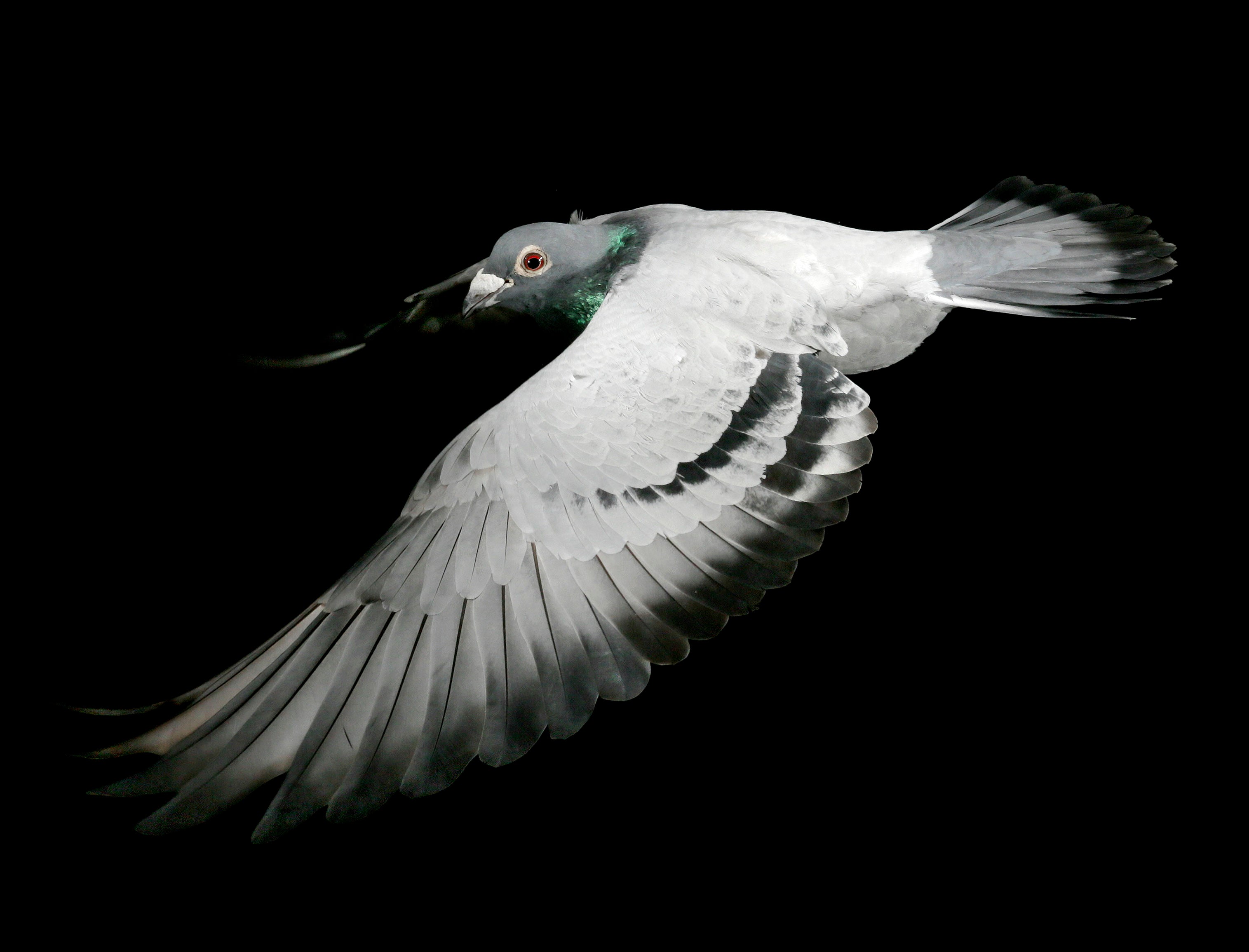
In the next coming months our young birds will go through their first molt. Feathers are one of the most important characteristics our birds have, which we as fanciers can have a direct impact on, in just the way we care for our birds during their feather growth periods.
As you move this years’ youngsters to a grow-out pen, its a great time to take a look over each bird. Give each bird a tablet for preventing canker, and dip or spray with a permethrin solution to treat and prevent external parasites. As soon as squeakers have been moved/weaned they will begin to molt their baby feathers; body feathers will drop first and grow in rapidly. The wing and tail feathers naturally drop in pairs, beginning with the feathers on the inside of the wing (secondaries) and molting toward the wingtips (flight feathers). Tail feathers drop starting in the center and molting outwards.
It is especially important to provide fresh food, water and mineral grit daily during the breeding and molting season. Any stress due to sickness, medication treatment, or times of poor/limited food or grit can cause a delayed or interrupted molt, and/or structural defects in the new feather called fret marks.
Some medications, specifically wormers containing Fenbendazole should not be used when feathers are actively growing as they will cause fret marks. Instead use medications containing alternative active ingredients, such as Moxidectin (SCATT and Quest Wormer) which has a wide safety margin and has not been found to cause defects in feather growth.
Cutting the feather quill (about 2/3rd of the way up from the feather tip) prior to pulling it is thought to dry out the feather quill and loosen it within its’ follicle, allowing for a less stressful and easier removal process. Growing feathers have a blood supply, and if pulled incorrectly can result in the bird bleeding through its feather shaft; quickly pull the entire feather to stop bleeding. Tip: Pliers can be helpful to get a good grip!
Protein, mainly in the form of keratin, makes up approximately 90% of the dry matter content of feathers. Keratin contains a high level of amino acids methionine and cysteine. Before the onset of the molt, increase protein and high fat seeds in the feed mix, and give vitamin and mineral supplements which include amino acids. Offer the birds weekly baths containing bath salts with Eucalyptus. The addition of Eucalyptus essential oil will help to deter external pests. Bathing also softens the growing feather sheath and stimulates preening (which in turn improves and maintains feather condition), this reduces the time to complete the molt, as well as increases the overall contentment of the birds in the loft.
Racing Birds
Generally, the young bird race season starts in August. Many fanciers pull flight feathers to speed up the molt process and to guarantee feather growth is completed in time for the beginning of the race season. It is suggested to pre-train young birds out to about 30 miles, and then following the natural molt of the 2nd flight, cut the 9th and 10th flight (the outermost feathers on the wing). After two weeks, pull the cut flights with a firm steady motion. Following pulling feathers, birds should be locked up and off the wing for the following six weeks to allow for the best feather regrowth.
Show Birds
For show birds, feathers are pulled if broken, in poor shape, or in tiger/splash colored birds to increase the spread of white in the bird’s pattern. The feathers on a muffed bird should be pulled roughly six to eight weeks before a planned show to guarantee the muff is in the best shape come show-time. Body feathers which form ornaments such as a crest, hood, mane, chain, or frill should be cut at the feather base (if allowed as part of the breed standard). Body feathers if pulled, will regrow rapidly between shows, and will create more work and/or pin feathers for the fancier. A cut feather will not molt and regrow on its own until the proper season, but a pulled feather will immediate begin to regrow itself. In case of a broken or mis-pulled blood feather, attempt to remove the feather completely and clean any resulting stain by spraying area with hydrogen peroxide or Miracle Care Feather Glow (found on Amazon)
Feather Regrowth Estimates
Flights: 6-7 weeks (Racing Homer) up to 12 weeks (Old German Cropper)
Body Feathers: ~3 weeks
Muff Feathers; Pomeranian Pouter: 8 weeks, Bavarian Pouter: 7 weeks, West of England: 6 weeks



